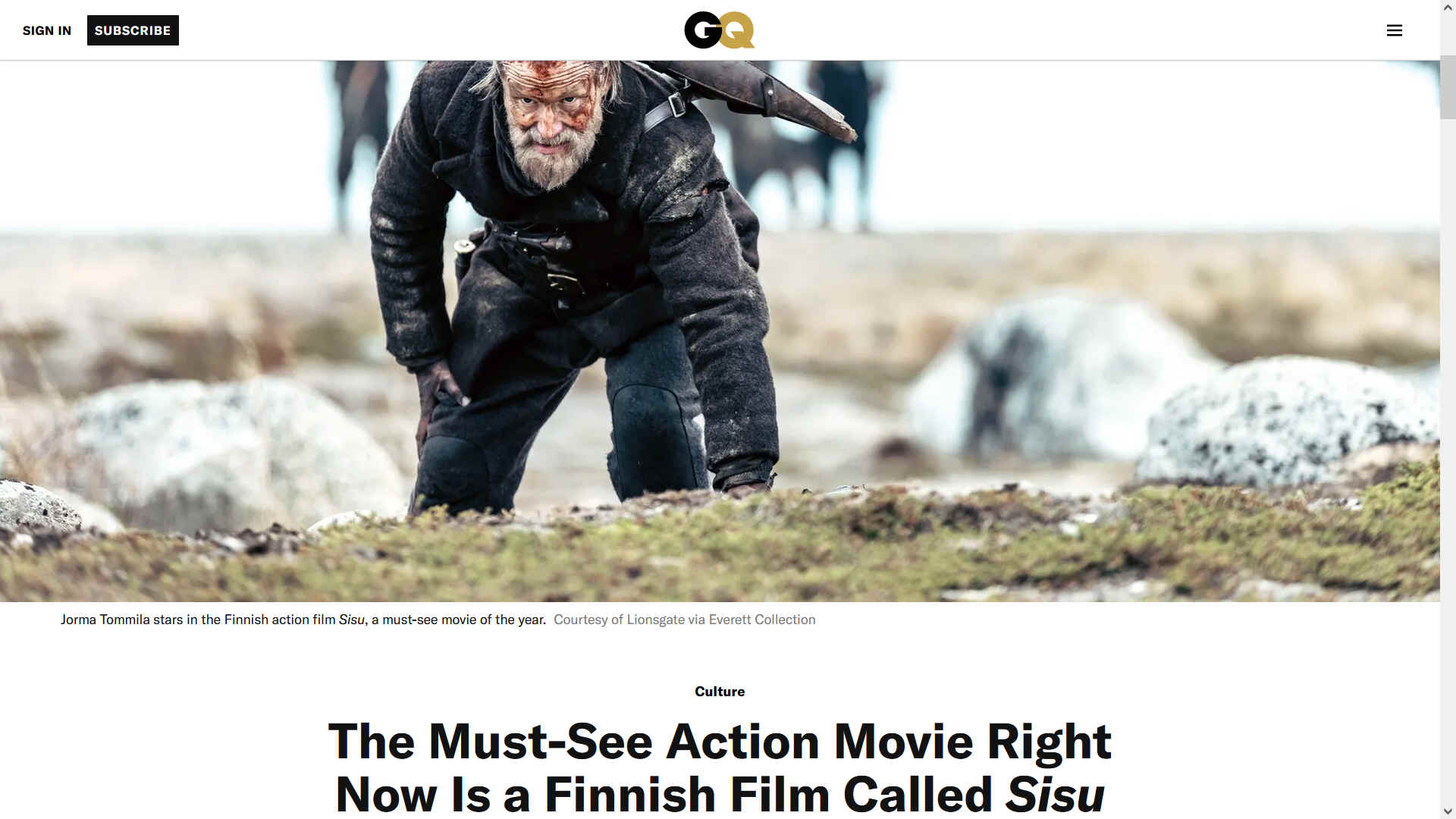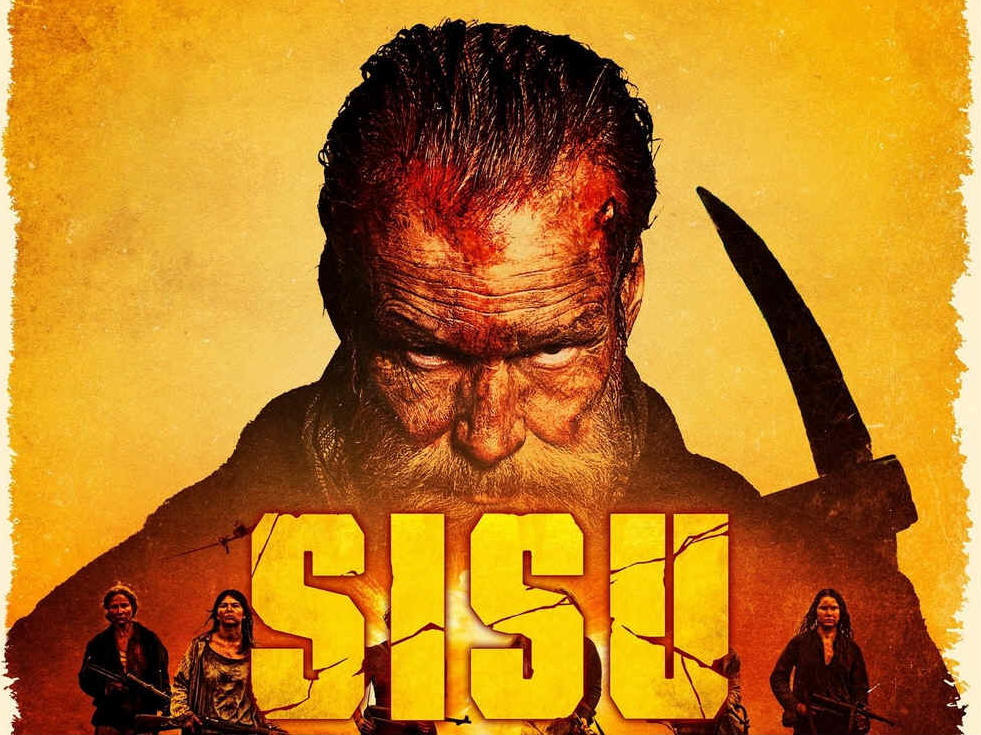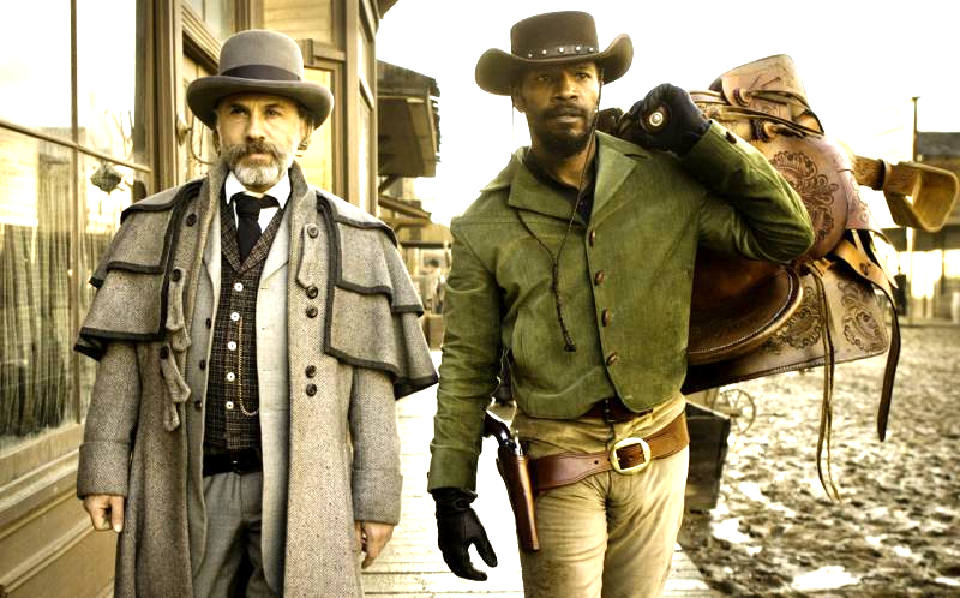|

In the United Kingdom, The
Colonial is Sisu, thrust into a world of Nazi Councillors and
Council officials, all on the make, sworn not to reveal the truth and to
watch each other's backs, including Sussex police, guaranteeing them
immunity from prosecutions. No evidence would ever be gathered and
existing files would be systematically destroyed. In the UK,
the state controls the crime scene and Legal Aid does not (did not)
extend to obtaining independent forensic medical evidence. Barrister
Julian Dale, and Solicitor Timothy Stirmey confirmed that to the
defendant. Later, barristers in England went on strike because Legal Aid
fees were so low, they were unable to defend their clients. It is
likely, as alleged, that The Colonials legal team, were bribed
to throw in the towel. The CPS and Sussex police, in on it.
This
story is remarkably aligned with the tale of Victor von Woolfe, and
of course the fictional John Rambo. The only real difference between
these stories is the time of the events, and most importantly, that
Victor's story is real. A true story. 'The Colonial Bulldog', is an
innocent man. Framed once by Wealden
District Council, as to the truth about the Old
Pump House in 1985, and again by Sussex
Police between 2006 - 2008, when their partners in crime, Wealden,
were about to be unfrocked about the fraud the police had helped to
cover up for over 25 years. If the police were honest, they'd be
prosecuting this council and the officers involved for fraud. The fact
they are sitting on their hands, is proof of their conspiracy and
dishonesty. The Planning Inspectorate are just as guilty, having been
recently apprised of their part in the conspiracy, since they repeatedly
failed to ascertain the truth or make proper enquiries themselves
between 1985 and 2023, as is the State,
for allowing this injustice to persist.
The reviews by GQ magazine and the
Guardian are spot on in our view. With GQ magazine providing a more
comprehensive write up, but the Guardian summing up rather well, except
that maybe the film will remain in the minds of many more for quite a
bit longer than suggested. These are valid opinions of course. We all
see things differently.

GQ MAGAZINE 25 MAY 2023
The first time Jalmari Helander saw First Blood at the local theater in his small Finland village of Jokela, he couldn’t wait to become John Rambo. He remembers immediately going home to run around the forest near his house armed with all the
Rambo essentials—bow and arrow, head band, huge knife—mimicking the stoic ‘80s warrior. As he grew older and eventually became a filmmaker, the movie remained his north star and biggest inspiration, particularly the moment in which Rambo takes a sewing kit out from the bottom of his knife and begins stitching up his lacerated arm on the edge of a cliff.
“I was so blown away by the scene,” Helander says on a recent Zoom call inside his office, framed by a massive First Blood poster hanging on the wall behind him. “I wanted to make an homage to that, but in a more badass way.”
It’s a tall order to make a film more badass than one of the greatest action movies of all time, but four decades after that fateful trip to the movies, Helander has thrown his hat in the ring with Sisu, his third feature film, which hit theaters last week. It’s a 90-minute, visceral gut-punch and the latest exercise in lean action filmmaking.
In the mold of Helander’s cinematic hero, the film follows Aatami Korpi (Jorma Tommila), a grizzled gold prospector and former military commander whose family was slaughtered during
World War
II. In their absence, he’s lived a solitary life as a ruthless, vengeful killing machine, roaming Finland’s countryside with his horse and loyal pooch and embodying the movie’s title, which Helander says best translates as “a white-knuckled form of courage and unimaginable determination that manifests when all hope is lost.”
The setup for his eventual rampage is, like the best action movies, simple and effective: At the end of the war, a Nazi battalion makes a scorched-earth retreat through Lapland, a snowy, northern region of Scandinavia, where it encounters Aatami and attempts to steal his hefty haul of gold. Big mistake.
Soon, Aatami unleashes carnage on his Aryan pillagers—shooting, stabbing, and bludgeoning the—provoking their SS leader into a series of deadly escalations. Throughout their cat-and-mouse game over the barren wilderness, Aatami unleashes hell with a creative imagination for gory retribution, decapitating, slicing, and grenading Nazis to smithereens, his mythos growing with each gratuitously depicted death. As an overt tribute to Rambo’s guerilla resourcefulness, Aatami even cauterizes his own abdominal gashes with gasoline, barbed wire, and matches.
Sisu’s unkillable, journeying protagonist and meat-and-potatoes plot has garnered comparisons to Mad Max: Fury Road and John Wick, recent, sturdy examples of no-frills, high-octane action. And it continues the trend of graying screen veterans (Bob Odenkirk in Nobody, Gerard Butler and Liam Neeson in… everything) taking matters into their own hands. The reaction so far—first at the Toronto Film Festival’s Midnight Madness, then throughout European theaters—has been gleeful and raucous. But Helander’s historical tilt and deliberate style distinguishes Sisu from other old-man Hollywood epics, leaning into his country’s expansive beauty while exemplifying its forgotten strength in the mid-20th century. Aatami is, essentially, a symbol of Finland’s masculinity—quiet, humble, and strong. “If I put it shortly,” Helander says, “the message of the film is: ‘Don't fuck with the Fins.’”

The idea for Sisu came to Helander on one of his daily, 12-kilometer morning walks. A couple years before the pandemic, he had been ruminating about the Nazis’ scorched-earth methods in 1944 and realized they would make ideal villains in a story he’d wanted to pursue about a man who strikes gold in Lapland. “These two ideas suddenly clicked together,” says Helander, who lives about 25 miles north of Helsinki. “90%of all my good ideas come when I’m walking and thinking about something else. They almost never come sitting at the computer.”
Though writing a script often takes him years, Helander says the lockdown forced him into an angry and dark place, giving him the strength to pen Sisu in two months. Not long after finishing, he called Tommilla about portraying his silent warrior, hoping to lean on the veteran Finnish actor to pull off a sympathetic but violent figure with hardly any speaking lines. “I had total confidence,” Helander says. “It's not that easy to not have dialogue and still be able to tell the story with just your body and face and eyes. I don't even understand what the casting process would be if I didn't know Jorma.”
The pair had met when Tommila began dating Helander’s sister. Upon becoming brothers-in-law, Helander cast him (as well as Tommila’s son) in his first two movies, Rare Exports: A Christmas Tale and Big Game, using their father-son dynamic to build out the emotional foundation of his action-heavy dramas. But this role required a different mindset for Tommila, who immediately connected with playing an older man beaten down by the horrors of war. “The guys who were actually in war were present when I was a kid, and there was something interesting and mystic about them,” Tommila tells me. “I knew really well what type of man they became after the war.”
Tommila spent a year getting in shape for what would be the biggest physical test of his career. He began by swimming and horse riding, gaining confidence and flexibility for the taxing and demanding scenes ahead. All the while, he paid special attention to strengthening his hands. “All the men back then were doing field work or forest jobs, and I wanted to look like that,” he explains “I got into the mindset of a man who doesn't use any machines. Everything he does is by himself.”
As he developed his script and went into production, Helander knew he’d need to be creative and blunt with his various death sequences, especially on a limited budget. Which is why, perhaps unsurprisingly, Aatami starts the killing spree with a dagger straight through the head of a Nazi soldier after the group threatens to kill him. In a matter of seconds, he’s dismantled the remaining three soldiers surrounding him, using their weapons against them and turning a dirt road into a bloodbath. Naturally, Helander used a healthy mix of practical effects and fake blood on set that he’d later enhance, to often-ludicrous
[Tarantino] proportions, with a VFX team.
The subsequent setpieces only grow more intense, distinguished by their sudden cuts and chapters that sometimes describe literally Aatami’s next obstacle, like a minefield into which he lures various
Nazis. Throughout this battle of attrition, Helander insisted on keeping the action in Lapland, emphasizing the nothingness around Aatami and his quest to trade in his gold. “It was really important for me to be in a location where there's basically no place to hide,” he says. “You don't have trees, the landscape goes on and on, and you’re totally alone there.”
As a native of Finland's west coast, Tommila embraced the vast plains, where he’d previously spent time hiking and skiing alone, even “sleeping in the snow,” he says, because of its peacefulness. “There are some guys who become crazy about Lapland in a way. They just want to be there as much as possible,” Helander says. “Jorma is like that.”
In the midst of writing Sisu, Helander didn’t think much about John Wick, but it’s not hard to see the comparisons. In the same way Keanu Reeves’ assassin boasts a notorious reputation in the underworld, Aatami’s own legend—hastened by his escapes from sure death—quickly spreads throughout the remaining
Nazi ranks. And then there’s Wick’s laconic demeanor, uttering only the bare minimum and letting his gun do the talking. Wick spoke an estimated 380 words in the last installment; Helander puts Aatami’s dialog at an exaggeratedly sparse (but not far off) “ two sentences."
The most notable connection, however, is the inclusion of Aatami’s trusty hound aiding his killer companion through ravaged land. Originally, he wanted his hero to have a more vicious looking pet, but when a producer saw Tommila’s own dog, Sulo, a Bedlington Terrier, in the background of a photo, he suggested using him instead. In a story with little exposition and character background, having an affectionate and loving scene partner became an important emotional device. “That tells you something about Aatami,” Helander says. “It helps that Jorma had a relationship with him and he knows the dog really well.”
If there’s one element he won’t try again, though, it’s working with horses. Throughout production, Tommila and the animal trainers had little luck keeping their equine friend still and settled, and at one point, Helander recalls the horse galloping 11 miles off the set, dropping all kinds of props from its saddle. “I'm pretty sure some day there's going to be some tourists finding a lot of
gold and being happy—before they take it back and realize it's not real.”
Following the movie’s rock concert-like premiere in Toronto last year, Helander has been impressed by other passionate reactions throughout his homeland and surrounding cities. Last month in Brussels was “like being in a really big football match,” he says. “People were throwing toilet paper rolls and they had whistles and horns.”
The aggressively positive response (uncharacteristic for his countrymen, according to the usual stereotypes) has been meaningful for Helander, knowing his movie offers a different perspective on the war and his people’s ability to fight for itself.
As Sisu continues its theatrical rollout in the United States, Helander says he’s received a few opportunities to direct Hollywood scripts, but he’s most excited about another Finnish movie he’s developing that he promises will be “even more badass” than Sisu.
“Finland has always been an underdog, because we have been under the forces of Russia or Sweden,” adds Tommila, who recalls a Finnish moviegoer calling him a national hero. “How we became an independent country is the idea of
Sisu.”
By Jake Kring-Schreifels
GUARDIAN REVIEW 24 MAY 2023 -
He is one mean motherfucker you don’t want to mess with!” The memo arrives too late for the Nazis. When they clap eyes on the mean motherfucker they mistake him for a harmless old gold miner. “Get down on your knees, grandpa,” one orders, laughing so hard that he doesn’t notice the hunting knife entering his skull through his left ear and exiting out of the right. And that’s just for starters.
For the rest of this extravagantly violent and cheerfully entertaining action film from Finland, director Jalmari Helander treats us to a comedy of deaths: a lavish grisly feast of Nazis meeting their maker in outrageous and wildly silly ways that had the audience I watched it with shrieking with laughter.
[It's like a western set in WWII along the lines of Jango Unchained]
Sisu is set in 1944, towards the end of the second world war. It opens with a granite-faced miner striking gold in the middle of nowhere. But setting off on horseback heading to the city, satchel full of gold, he meets a convoy of Nazis rolling out of Finland. You might think there’s zero mileage left in the movies for psychopathic
Nazis, but Helander finds a newish and sort-of-interesting angle here with his portrayal of Germans at the fag end of the conflict: war-addled and woozy, dressed in torn uniform with dead eyes and grimy faces. The game is up, and they are nihilistic.
That said, none of them is exactly burdened with character complexity. That goes for the miner too: he turns out to be a legendary Finnish soldier called Aatami, so tough that he can plunge his hand deep into his own innards to pull out shrapnel. Earlier in the war, the Russians nicknamed him the Immortal, and he’s played by Jorma Tommila, a strong though not quite commanding presence. Like John Wick in a spaghetti western, Aatami takes out the Nazis one by one.
Everyone speaks here in accented English – “get off zeee horse” – which the film gets away with. Firstly, because there’s very little dialogue and secondly, because everything here feels a bit tongue-in-cheek in a Tarantino kind of a way. It’s super fun entertainment, which mostly disguises the fact it’s not going to stick in the mind for long.

MOVIE INFO
During the last desperate days of WWII, a solitary prospector (Jorma Tommila) crosses paths with Nazis on a scorched-earth retreat in northern Finland. When the Nazis steal his
gold, they quickly discover that they have just tangled with no ordinary miner. While there is no direct translation for the Finnish word "sisu", this legendary ex-commando will embody what sisu means: a white-knuckled form of courage and unimaginable determination in the face of overwhelming odds. And no matter what the Nazis throw at him, the one-man death squad will go to outrageous lengths to get his gold back -- even if it means killing every last Nazi in his path.





Jorma Tommila - Aatami Korpi
| Aksel Hennie - Bruno Helldorf | Jack Doolan - Wolf
| Mimosa Willamo - Aino | Onni Tommila - Schütze
| Arttu Kapulainen - Rower
Rating: R (Language|Gore|Strong Bloody Violence)
Genre: Action, War
Original Language: Finnish
Director: Jalmari Helander
Producer: Petri Jokiranta
Writer: Jalmari Helander
Release Date (Theaters): Apr 28, 2023 wide
Release Date (Streaming): May 16, 2023
Box Office (Gross USA): $7.3M
Runtime: 1h 31m
Distributor: Lionsgate
Production Co: Subzero Film Entertainment, Just Bridge Entertainment, Good Chaos
Sound Mix: Dolby Digital
Aspect Ratio: Digital 2.39:1
MOVIES
& TV
Django
Unchained 2012
Double
Jeopardy 1999
Enemy
of the State 1998
John
Wick 2014
Gladiator
2000
Mr
Bates Vs The Post Office (Horizon) 2024
Rambo
First Blood 1982
Rules
of Engagement 2000
Sisu
2023
The
Bonfire of the Vanities 1990
The
Crown, Netflix 2013 - 2023
The
Fugitive 1993
Yes
(Prime) Minister 1980 - 1988

|








